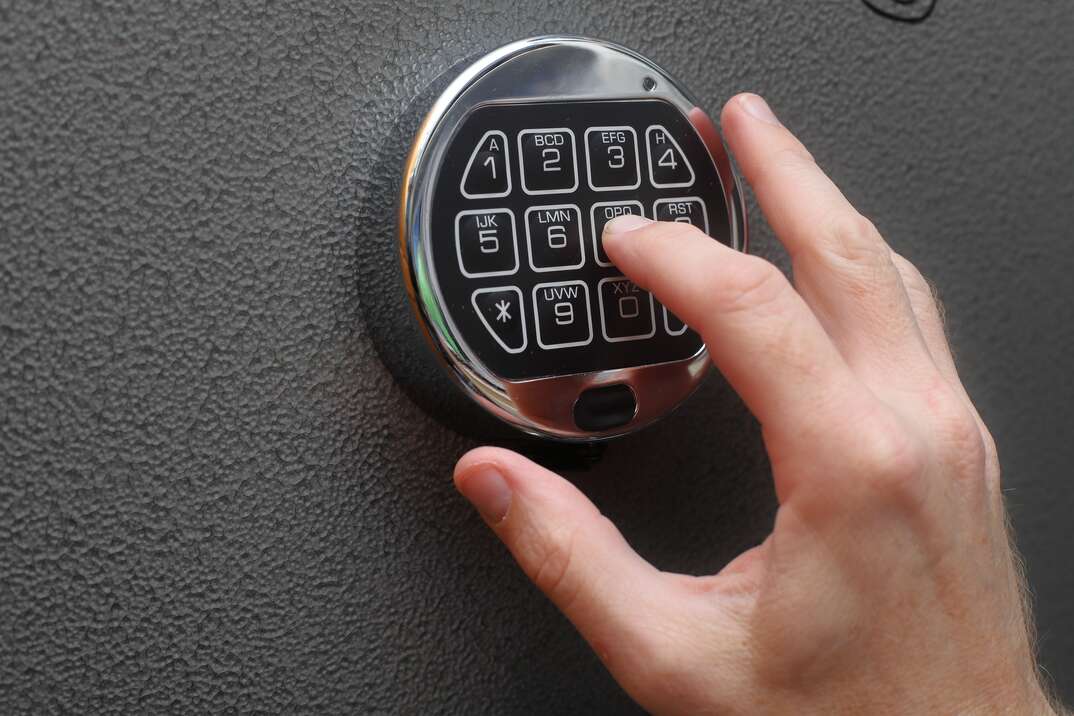- AppliancesElectriciansHVACLandscapingLocksmithPest ControlPlumbingRenovationRoofingT V RepairAll Home Improvement
- Car AccidentClass ActionCorporate LawCriminal DefenseDivorce LawEmployment LawFamily LawFinancial LawLegal AidMedical Injury LawyersMedical MalpracticeReal Estate LawWater Fire RestorationAll Legal
- InvestmentRetirementAll Finance
- Animal InsuranceAutoGeneral InsuranceHealth PolicyHome RentersAll Insurance
- DentalHealth SpecialistsAll Medical
- Animal CareVeterinaryAll Pets
- Auto GlassTowingAll Automotive
How to Choose the Right Safe For Your Home

Do you forget where you have hidden your documents and valuables? If so, perhaps it's time to consider a home safe to store these items securely. There are many safes on the market, and choosing the best home safe is crucial to keep your possessions secure from theft or damage by fire.
Read More Locksmith and Security Articles
Before diving into the different safes offered, decide what you want to protect and against which risks, as these factors considerably impact the type of safe.
Decide What You Will Store in the Safe
Document safes are great for protecting paper documents and cash but aren't so suitable for jewelry, which needs lined shelves and drawers to protect against accidental damage. Digital media, hard drives and laptops require safes that can keep the internal temperatures below 125 degrees Fahrenheit, while firearms require safes that are suitably sized and humidity-protected to prevent metal components from rusting.
Evaluate the Threats to Your Property
Decide whether you're primarily protecting your documents and valuables against theft or fire. Standard safes have heavy steel walls and secure locking systems to deter thieves but don't have good fire protection. Fire safes use thinner steel and composite materials to thermally insulate the contents but are easier to break into. High-security burglar/fire safes are available but expensive.
Choosing the Safe's Size
Try to choose a larger safe than you currently need, taking into consideration its size, weight and cost. Consider the possibility of multiple safes for items that require diverse levels of protection, such as firearms, electronic media and documents.
Understanding Safe Security Ratings
Ideally, pick a safe that provides a relative degree of protection against thieves related to the value of your possessions. Burglary safe construction ratings show their ability to withstand attacks by experienced professionals. But note that no safe is immune to professional attack. It's best to implement other security measures, such as alarms and motion detection lights, to discourage burglars.
Common U.S. ratings include:
- Class B: The lowest-rated safe with a body made from one quarter inch steel and a door from one-half inch steel.
- UL RSC: A Residential Security Container safe tested by the Underwriters Laboratory to withstand five minutes of vigorous attacks with suitable tools.
- Class C: A higher-rated safe with a body made from 1/2-inch steel with a 1-inch thick door.
- UL TL-15 tool resistant and UL TL-30: The highest-rated safes that can resist attacks by trained professionals with sophisticated tools for 15 minutes and 30 minutes, respectively.
More Related Articles:
- 8 Benefits of Installing Smart Locks
- Here’s How Much a Locksmith Charges for 5 of the Most Common Services
- Lose Your Keys Often? Here's How to Prevent Lockouts
- Installing a New Deadbolt? Here's Everything You Need to Know
- What Is Rekeying a Lock?
The fire retardant rating of a safe has two components. The first is the maximum temperature inside the safe when subjected to a fire of a certain intensity, and the second is the fire-rated time. UL ratings include:
- UL Class 350: This is sufficient to protect paper documents. The internal temperature won't exceed 350 degrees Fahrenheit for the stated duration in hours (between one and four hours).
- UL Class 150: This class restricts the maximum temperature in the safe to 150 degrees Fahrenheit and the maximum relative humidity to 85%. It's suitable for protecting computer discs and photos.
- UL Class 125: This class provides a slightly tighter classification of 125 degrees Fahrenheit and 80% maximum relative humidity for more sensitive electronic equipment and floppy discs.
Other fire ratings equivalent to UL Class 350 include the Korean Industry Standard (KIS), the Japanese JIS rating and Intertek laboratories (ELT).
Different Types of Locking Mechanisms
Depending on the safe, it may have one or more locking systems, including:
- Key: A simple and effective mechanism but vulnerable if the key is stolen or lost
- Combination lock: A very secure method that uses three or four number combinations with over a million possible permutations
- Digital lock: A lock that uses a key code for convenient access, but replacing batteries may be inconvenient
- Biometric: Very secure lock because only the owner can unlock the safe
How to Choose a Home Safe
When buying a safe, make certain it's large enough for your needs but not so large that you have nowhere to install it. Also, decide whether you want a burglary, fire or combination safe. Common installation locations include in the wall or the floor. Wall safes are convenient to use and difficult to remove when secured with studs. Find somewhere innovative to hide the safe, as thieves will check behind artwork. A floor safe is very secure, as you can embed the safe into a concrete floor and cover it with a rug for concealment. Frequently accessed safes like digital media and gun safes are best placed in convenient locations for easy access.
Elocal Editorial Content is for educational and entertainment purposes only. Editorial Content should not be used as a substitute for advice from a licensed professional in your state reviewing your issue. Systems, equipment, issues and circumstances vary. Follow the manufacturer's safety precautions. The opinions, beliefs and viewpoints expressed by the eLocal Editorial Team and other third-party content providers do not necessarily reflect the opinions, beliefs and viewpoints of eLocal or its affiliate companies. Use of the Blog is subject to the
Website Terms and Conditions.The eLocal Editorial Team operates independently of eLocal USA's marketing and sales decisions.



